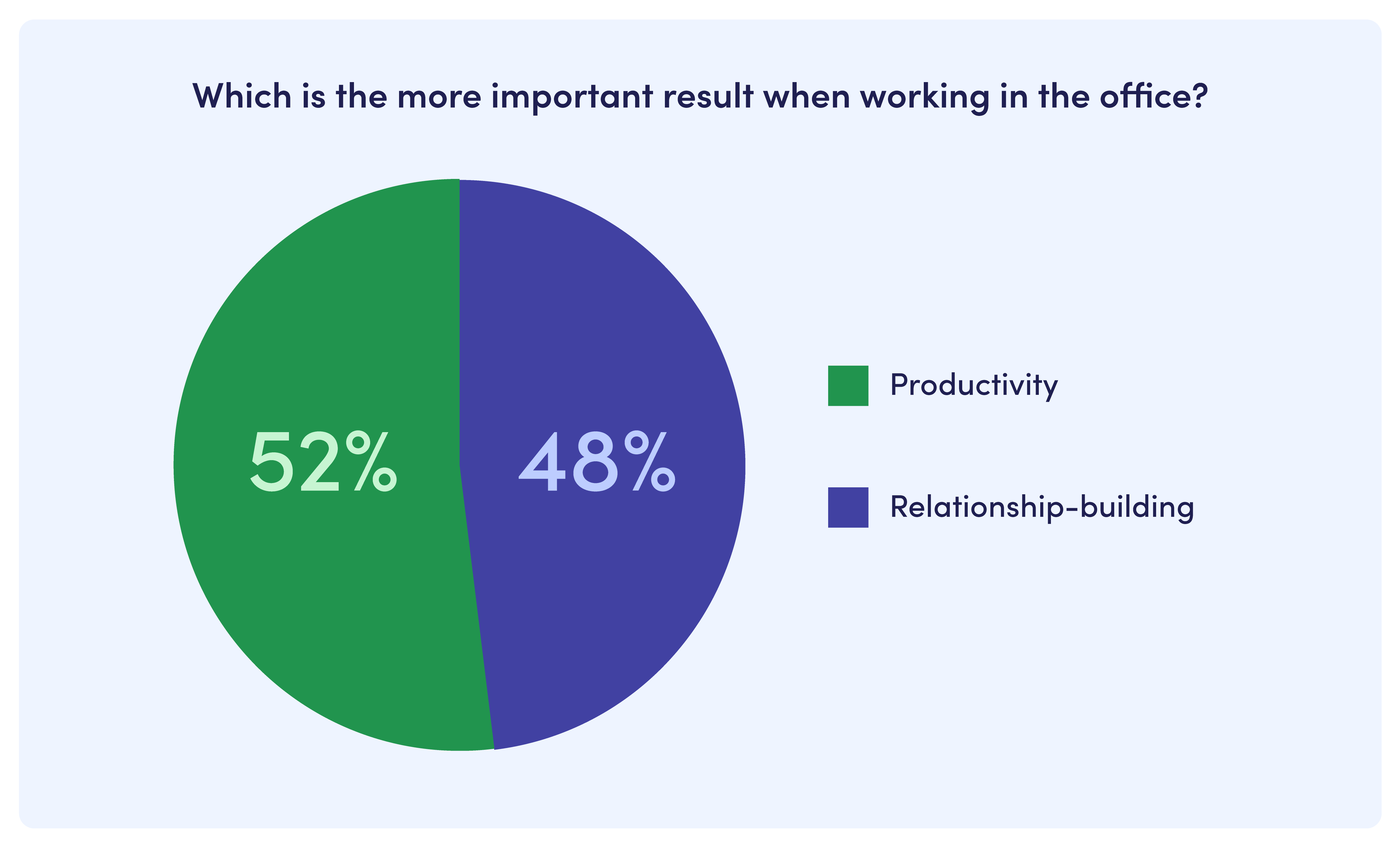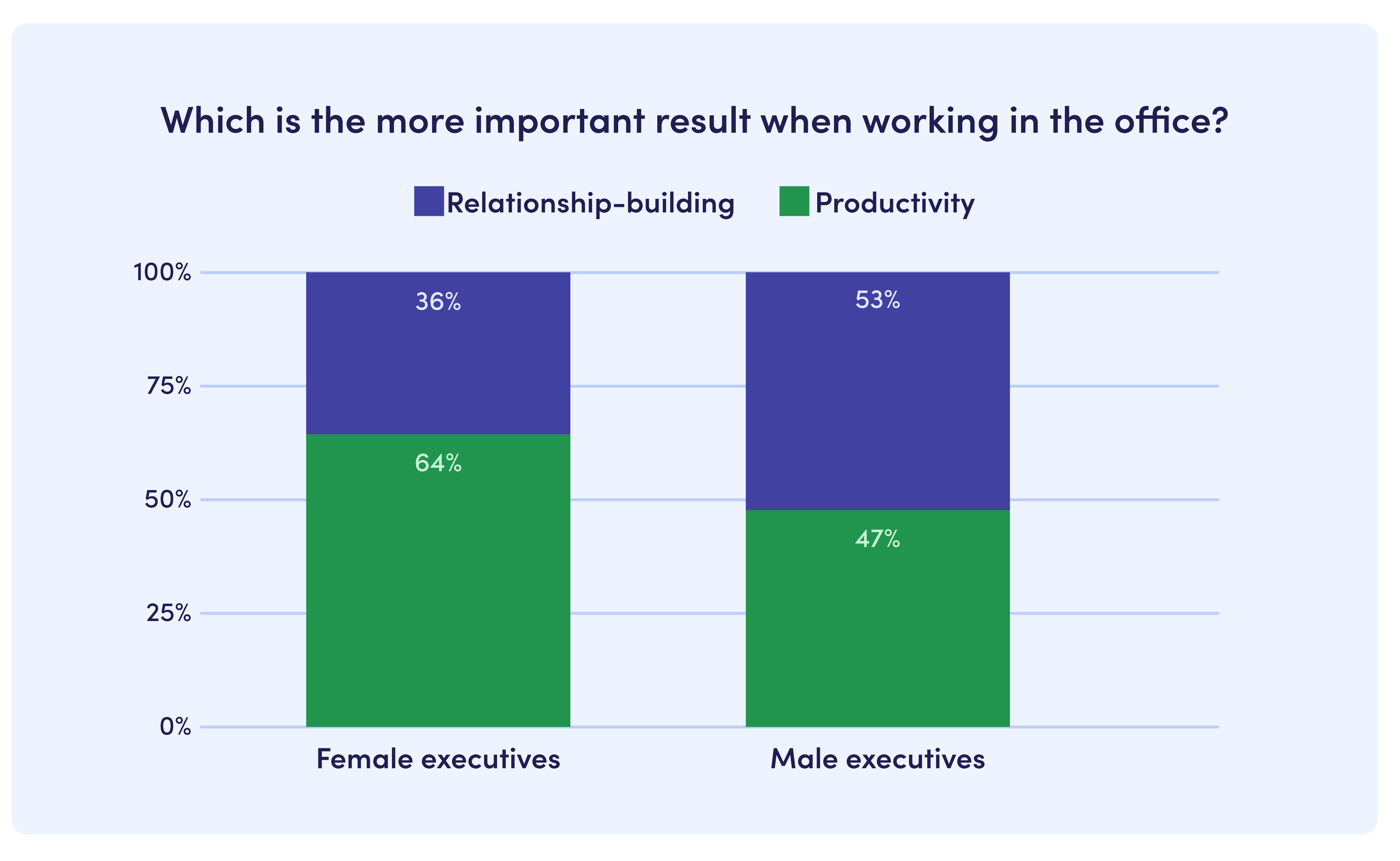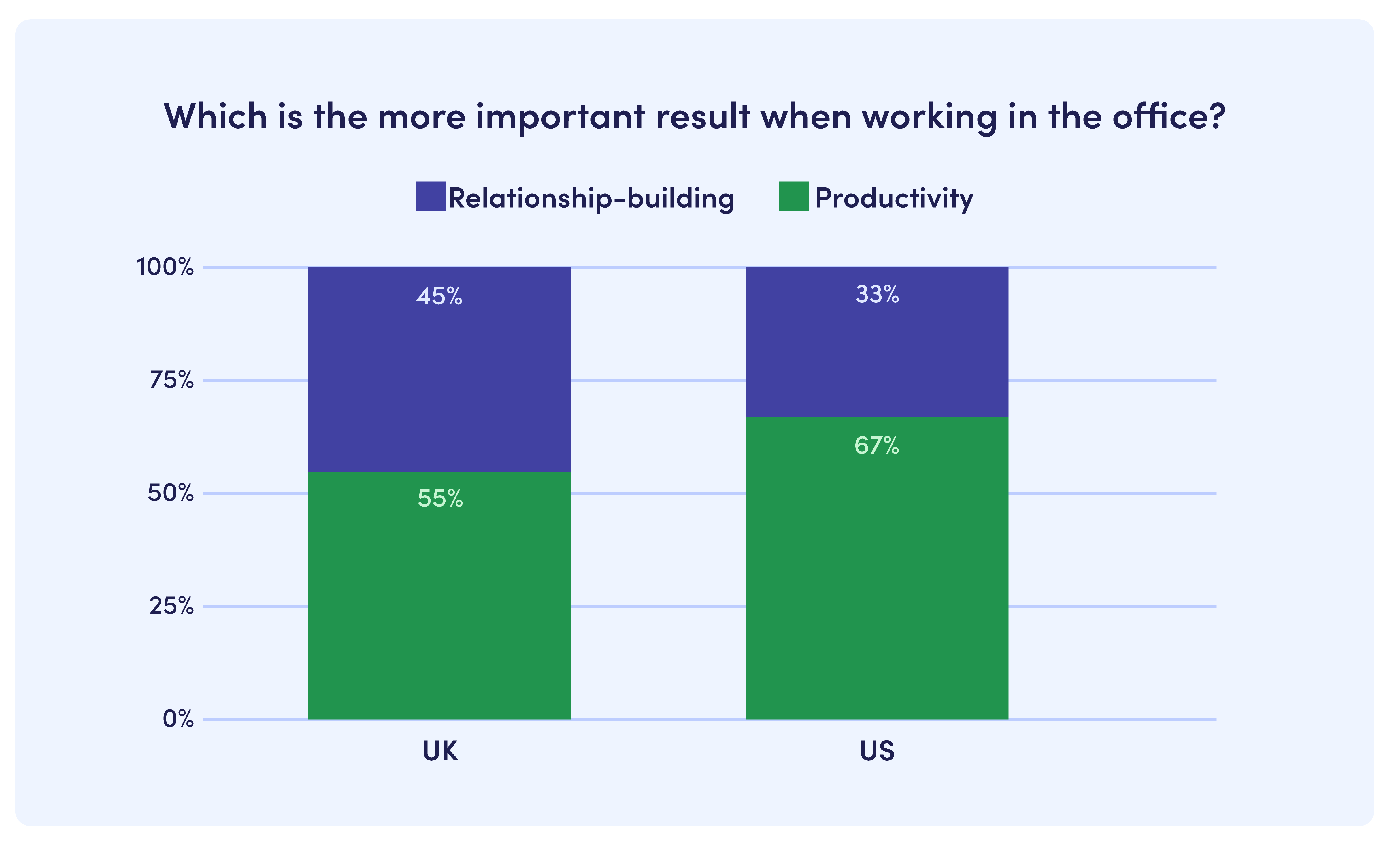The workplace wears many hats. It can be a place to meet and work in person with your team. Or a breeding ground for innovation and new ideas. It can be a place of heads-down focus work. Or a place to socialise and make work friends. The workplace is a place to come together and get work done. But what of these reigns supreme as the most important? And is what’s important to employees the same as how their executives feel?
In our latest At Work report, we surveyed 1,000 employees and 250 executives in the United Kingdom to find out how they really feel about the workplace. Here’s what we uncovered.
Executives hold productivity and relationship-building neck in neck
Many leaders have claimed that say they are eager to bring employees back into the office to foster relationships among coworkers and build workplace culture. But we were curious, what do leaders truly care about when their teams are working onsite? So we asked executives in the UK what the most important result of working in an office is: productivity or building relationships with coworkers. One would think relationship building would win out, given how many CEOs are citing the primary benefit of the workplace being collaboration and community. However, our survey found that most executives (52%) say productivity is the more important outcome of working in an office.

Interestingly, executives in the UK who identify as female were 36% more likely to value productivity over relationship-building compared to their male colleagues. The majority (53%) of executives who identify as male were actually more likely to value relationship-building over productivity onsite.

The split was also varied when looking at different seniority levels among executives. While 53% of the c-suite think relationship-building is more important, 62% of senior leaders and directors think productivity holds more value.
Employees care more about productivity—but just barely
So executives are torn about the purpose of the workplace. But what about employees? To find out, we asked 1000 employees in the UK the same question. Which is the more important result when working in the office: productivity or building relationships with coworkers? Among employees, 55% prioritize productivity over building relationships with their colleagues onsite. Interestingly, this is 22% less than employees in the United States where 67% of employees put productivity first.

Diving deeper into the data, we discovered some interesting trends. The more money that employees made, the more they valued building relationships with coworkers. Here’s the breakdown by income bracket:
- 64% of employees who make less than £30K annually value productivity in the workplace more than creating relationships with coworkers
- That majority drops by 16% for those making £30-80K; 55% of employees in this income bracket value productivity over relationship-building
- And the majority swaps for those who make over £80K annually: 55% of employees making >£80K actually value relationship building in the office over productivity
Hybrid does hone more relationship-building
Finally, we wanted to know if a company’s office attendance policy played a role in what employees value. Does hybrid work actually create more intention for employees to go to the workplace to get together and collaborate with colleagues? The answer is yes. Compared to those in the office full-time, hybrid employees are 86% more likely to value relationship-building more than productivity on-site. The majority (56%) of hybrid employees say that they go into the office more to collaborate with colleagues in person. It’s just far easier to meet, brainstorm, collaborate, and solve problems face-to-face. On the other hand, 70% of employees who are in the office five days a week value their heads-down productive time more than building relationships with coworkers.

The takeaway
The results are in, and productivity in the workplace takes priority among the majority of employees and executives. But the winner isn’t as clear-cut as you might think. The true value of the workplace really comes down to a person-by-person basis. No matter your gender, your income level, or your seniority at your company, it’s really up to each employee to decide what value the workplace holds.
So what does this mean for workplace leaders? It means that to create a workplace that works for everyone, you need to invest in spaces and technology that support both productivity and relationship-building onsite. A workplace should be a balanced place for employees to get work done, no matter their preferences. That means an equal amount of heads-down, private, and quiet zones in the office as there are open, social, collaborative spaces.
Read more
Searching for a visitor management solution? Learn what to look out for and how to choose the best tech for your team.
Managing your space well doesn’t have to be difficult. But if you want to be successful, you need the right approach.
A well-run workplace can set your team up for success. Learn why workplace management matters and how to do it right.
Workplace security is critical to the future of your business. Learn why it matters, what threats to watch for, and how to strengthen your workplace security plan.
In this post, we’ll explore what workplace compliance is and how to build a compliance culture for your organization.
With more folks sending personal packages to the workplace, having a sound mailroom management system in place is key.










